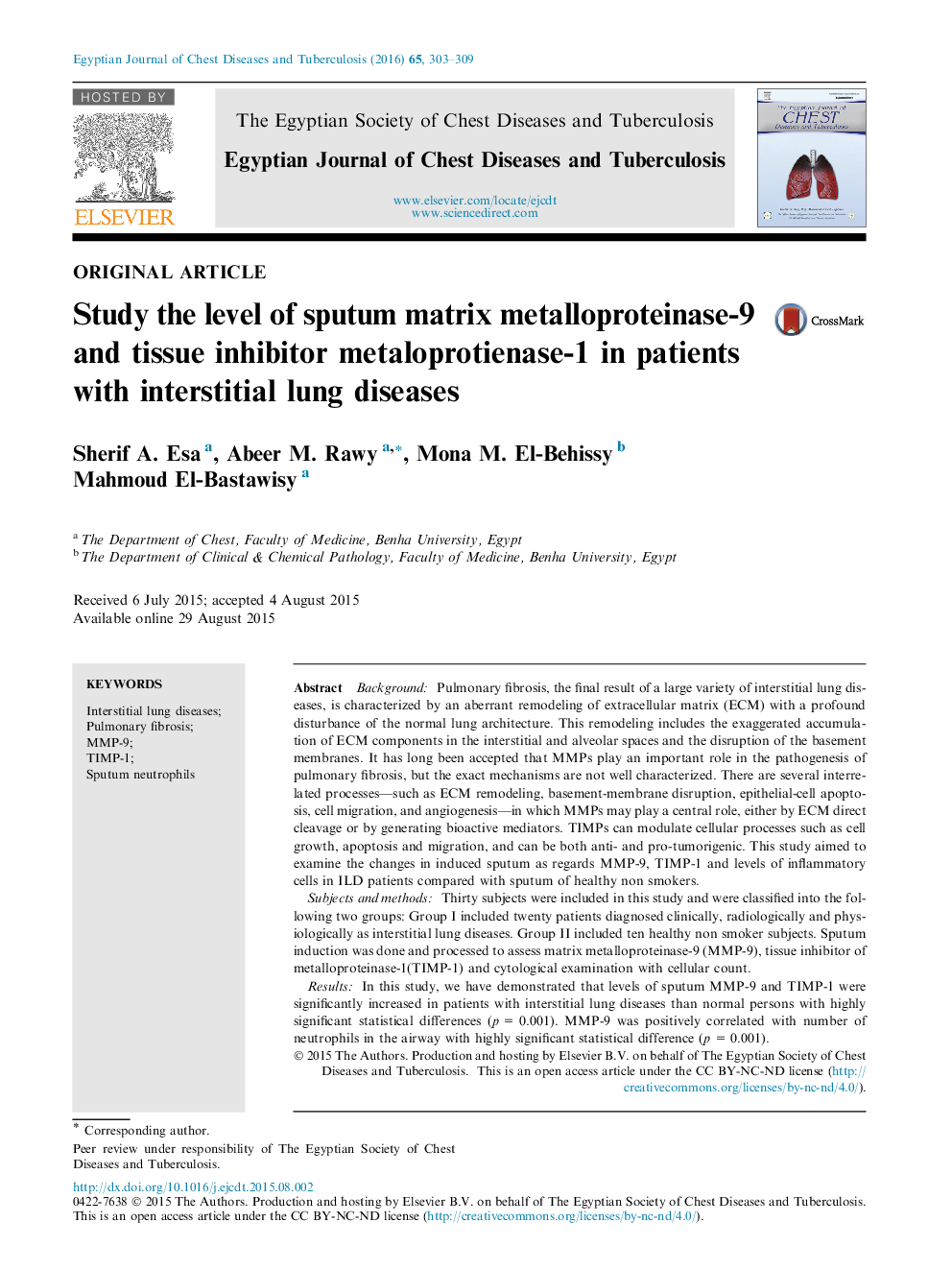| Article ID | Journal | Published Year | Pages | File Type |
|---|---|---|---|---|
| 3399919 | Egyptian Journal of Chest Diseases and Tuberculosis | 2016 | 7 Pages |
BackgroundPulmonary fibrosis, the final result of a large variety of interstitial lung diseases, is characterized by an aberrant remodeling of extracellular matrix (ECM) with a profound disturbance of the normal lung architecture. This remodeling includes the exaggerated accumulation of ECM components in the interstitial and alveolar spaces and the disruption of the basement membranes. It has long been accepted that MMPs play an important role in the pathogenesis of pulmonary fibrosis, but the exact mechanisms are not well characterized. There are several interrelated processes—such as ECM remodeling, basement-membrane disruption, epithelial-cell apoptosis, cell migration, and angiogenesis—in which MMPs may play a central role, either by ECM direct cleavage or by generating bioactive mediators. TIMPs can modulate cellular processes such as cell growth, apoptosis and migration, and can be both anti- and pro-tumorigenic. This study aimed to examine the changes in induced sputum as regards MMP-9, TIMP-1 and levels of inflammatory cells in ILD patients compared with sputum of healthy non smokers.Subjects and methodsThirty subjects were included in this study and were classified into the following two groups: Group I included twenty patients diagnosed clinically, radiologically and physiologically as interstitial lung diseases. Group II included ten healthy non smoker subjects. Sputum induction was done and processed to assess matrix metalloproteinase-9 (MMP-9), tissue inhibitor of metalloproteinase-1(TIMP-1) and cytological examination with cellular count.ResultsIn this study, we have demonstrated that levels of sputum MMP-9 and TIMP-1 were significantly increased in patients with interstitial lung diseases than normal persons with highly significant statistical differences (p = 0.001). MMP-9 was positively correlated with number of neutrophils in the airway with highly significant statistical difference (p = 0.001).
